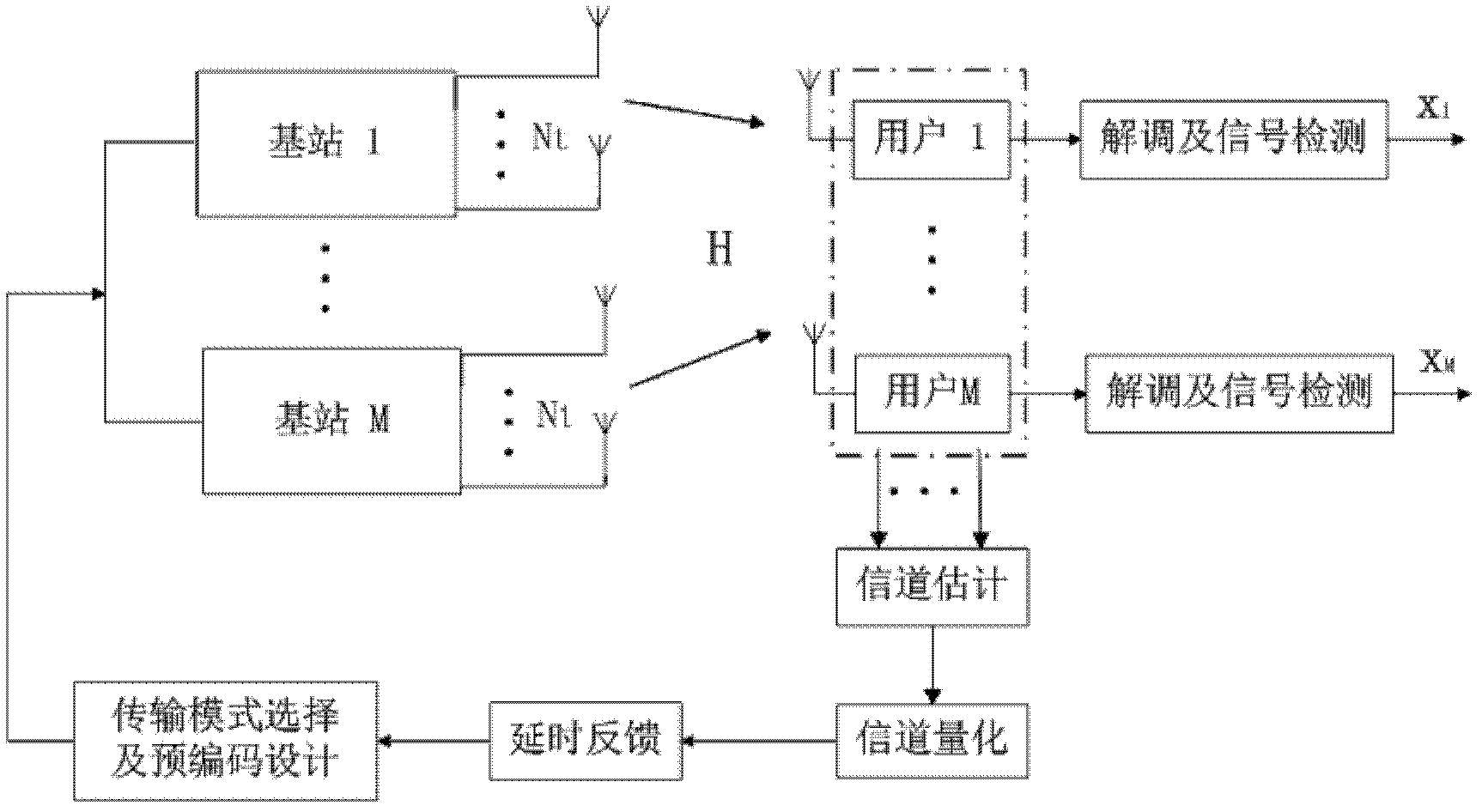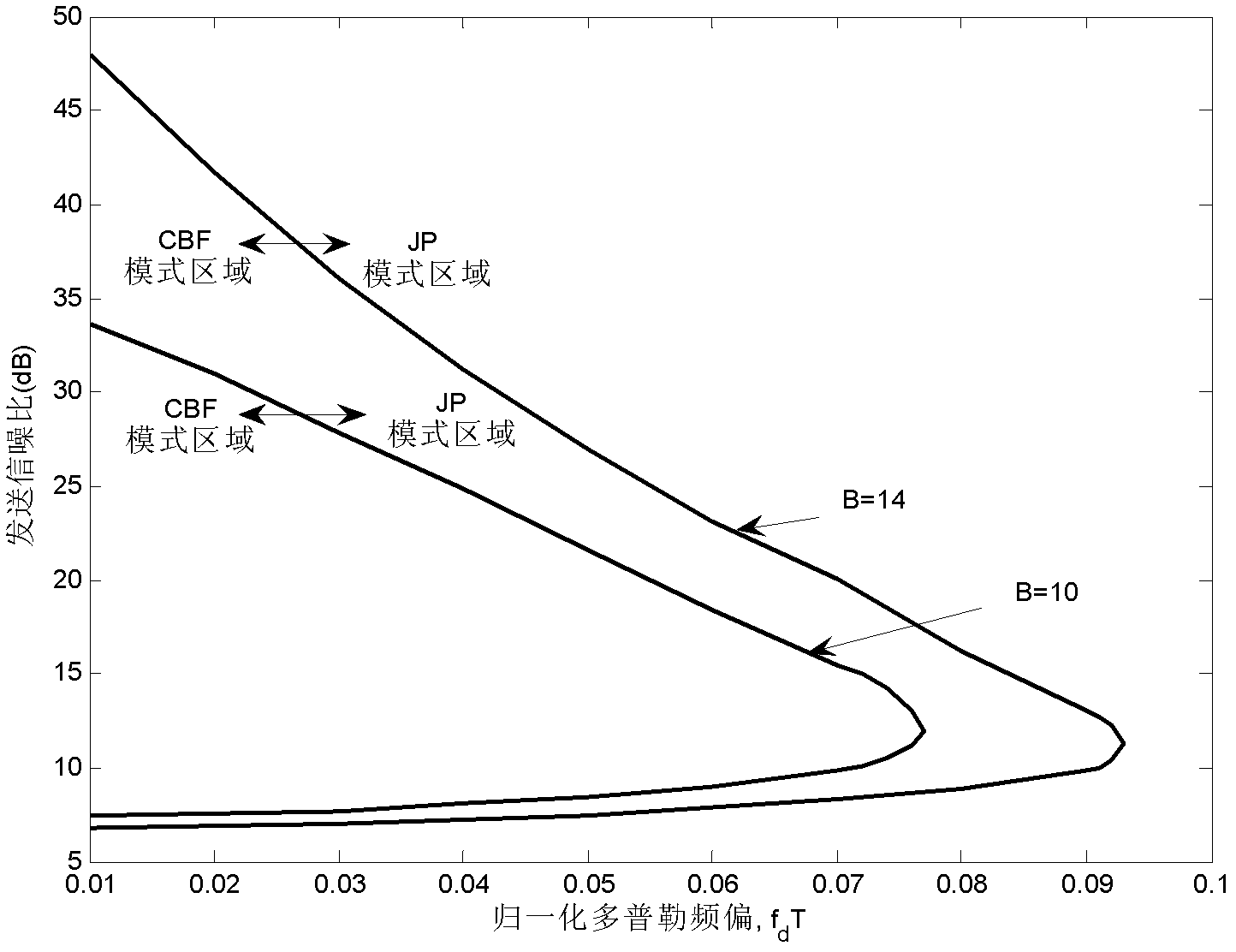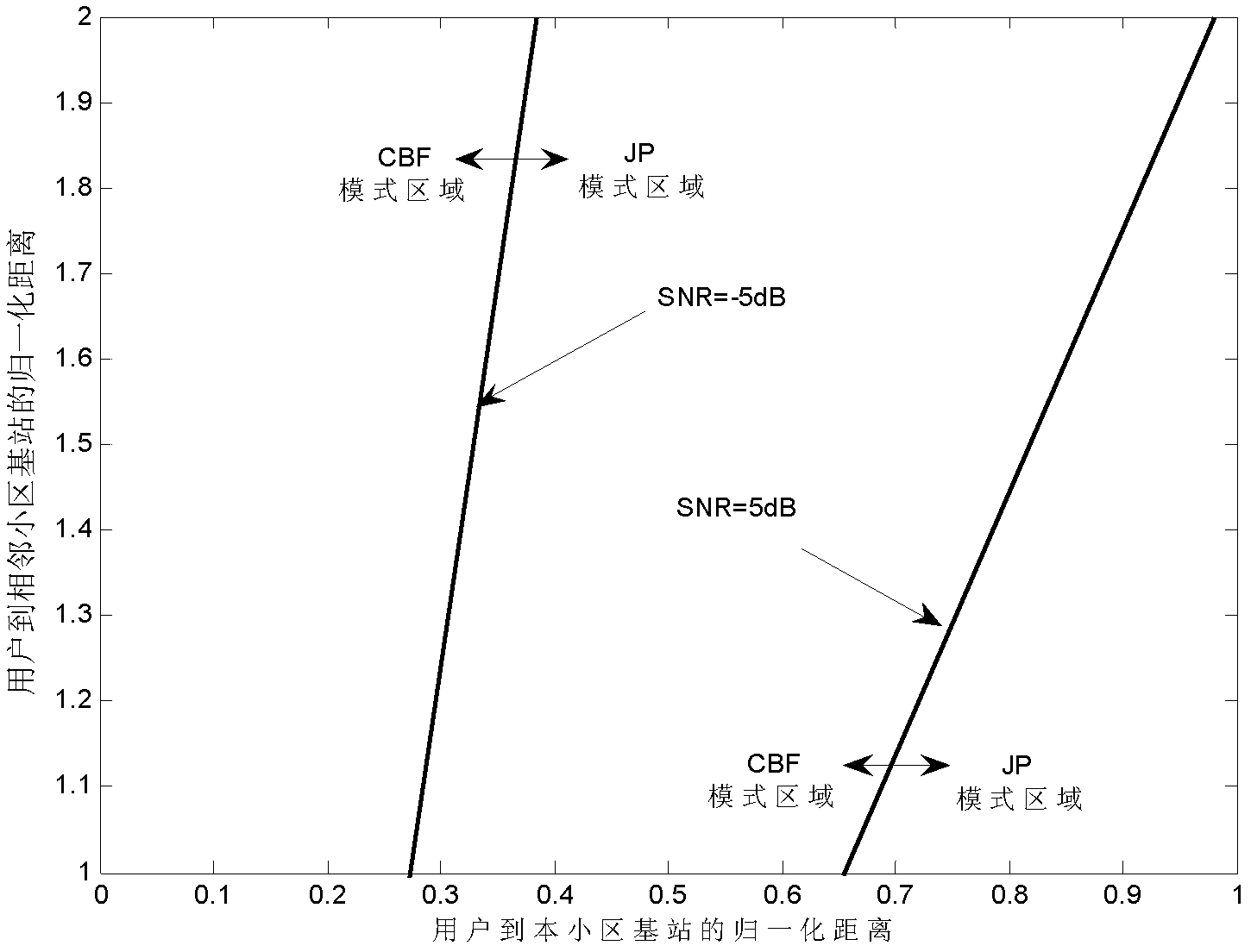Multicell self-adaption cooperative transmission method on basis of delayed feedback
A technology of cooperative transmission and transmission method, applied in the direction of diversity/multi-antenna system, space transmit diversity, etc., can solve the problems of performance degradation, quantization error between system channel information and real channel information, information delay, etc.
- Summary
- Abstract
- Description
- Claims
- Application Information
AI Technical Summary
Problems solved by technology
Method used
Image
Examples
Embodiment Construction
[0043] The present invention will be further described below in conjunction with the accompanying drawings.
[0044] Such as figure 1 As shown, a delayed feedback-based multi-cell adaptive cooperative transmission method of the present invention is implemented in the following steps:
[0045] 1) The system surveys the average moving speed v of multiple user terminals in the M adjacent cells participating in the cooperation, 2≤M≤7, and calculates the user's Doppler frequency offset f d , to determine the channel delay correlation coefficient;
[0046] 2) Each cell selects a user to wait for data transmission through round-robin scheduling. At the beginning of each transmission, the user first performs channel estimation to obtain channel information and path power attenuation factor, and then quantizes the channel information according to the existing codebook, and Feedback the quantized channel information and path power attenuation factor to the base station;
[0047] 3) T...
PUM
 Login to View More
Login to View More Abstract
Description
Claims
Application Information
 Login to View More
Login to View More - R&D
- Intellectual Property
- Life Sciences
- Materials
- Tech Scout
- Unparalleled Data Quality
- Higher Quality Content
- 60% Fewer Hallucinations
Browse by: Latest US Patents, China's latest patents, Technical Efficacy Thesaurus, Application Domain, Technology Topic, Popular Technical Reports.
© 2025 PatSnap. All rights reserved.Legal|Privacy policy|Modern Slavery Act Transparency Statement|Sitemap|About US| Contact US: help@patsnap.com



